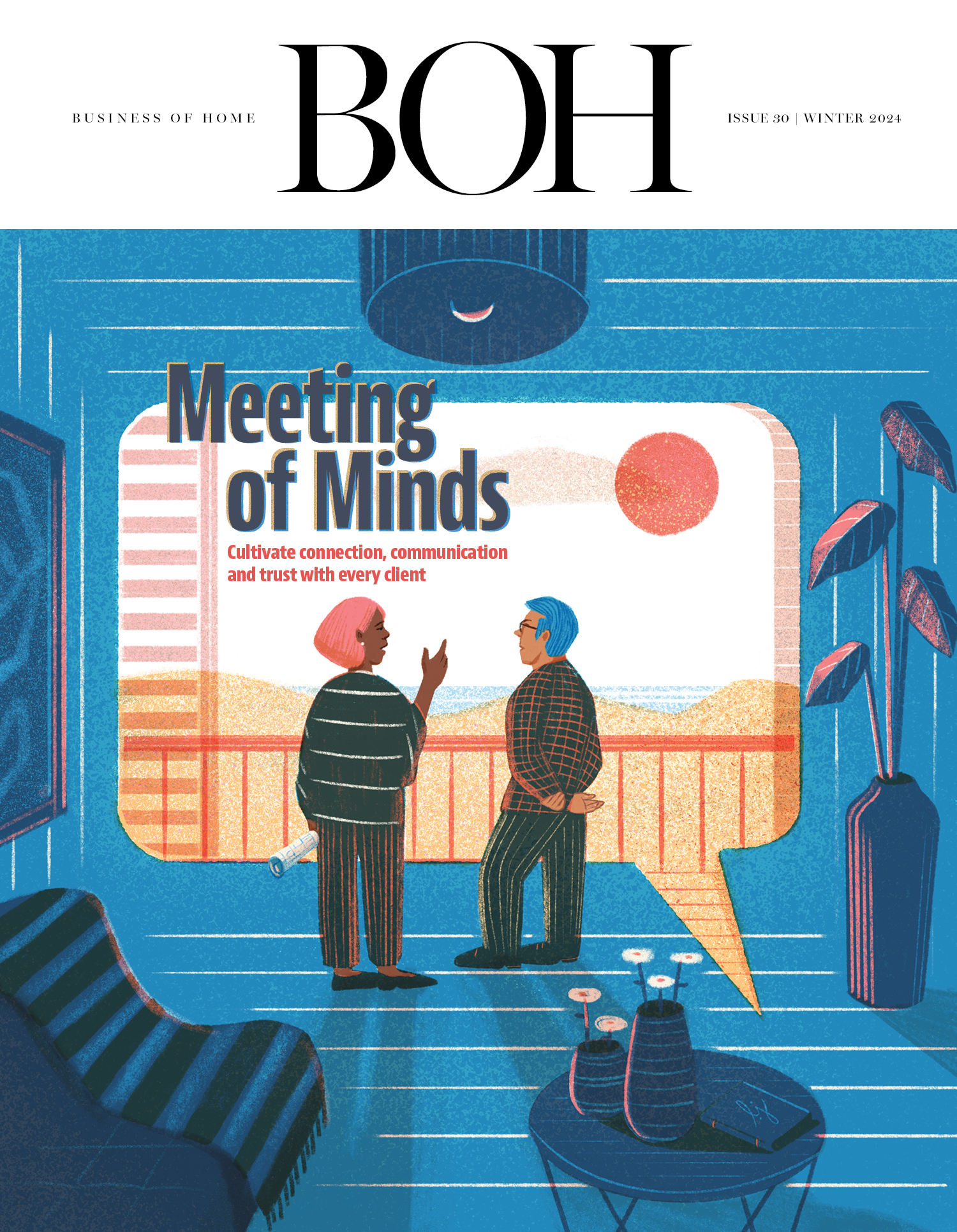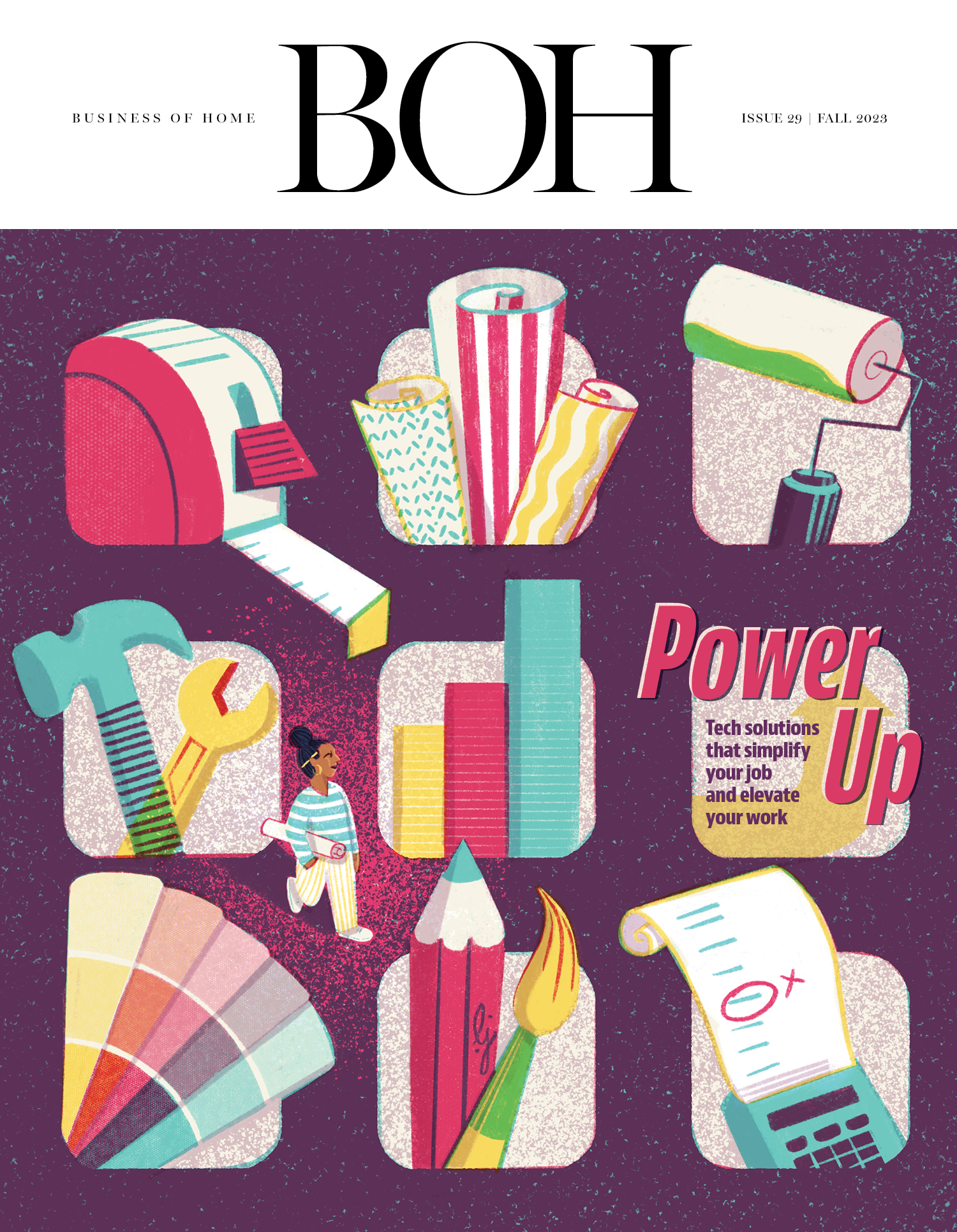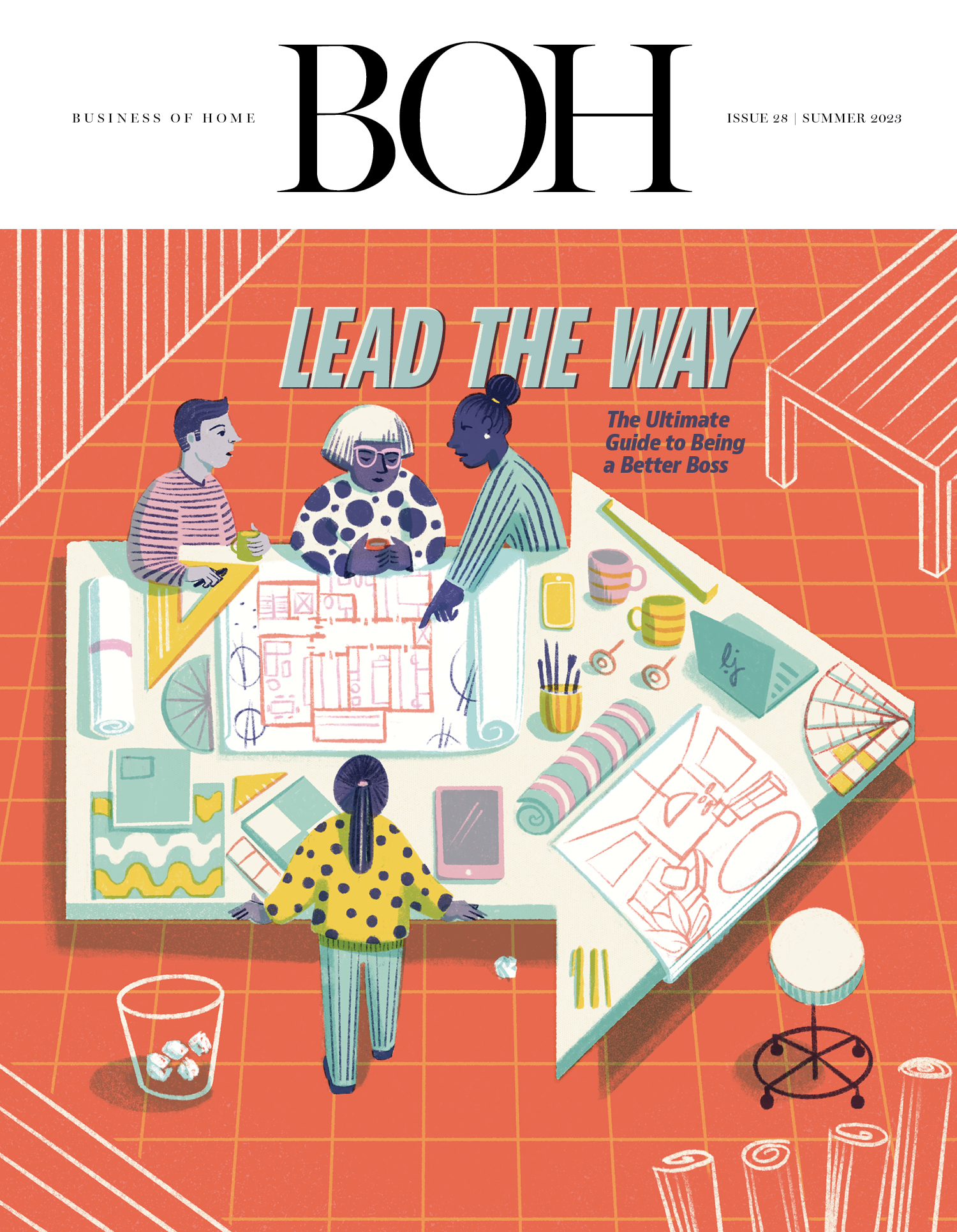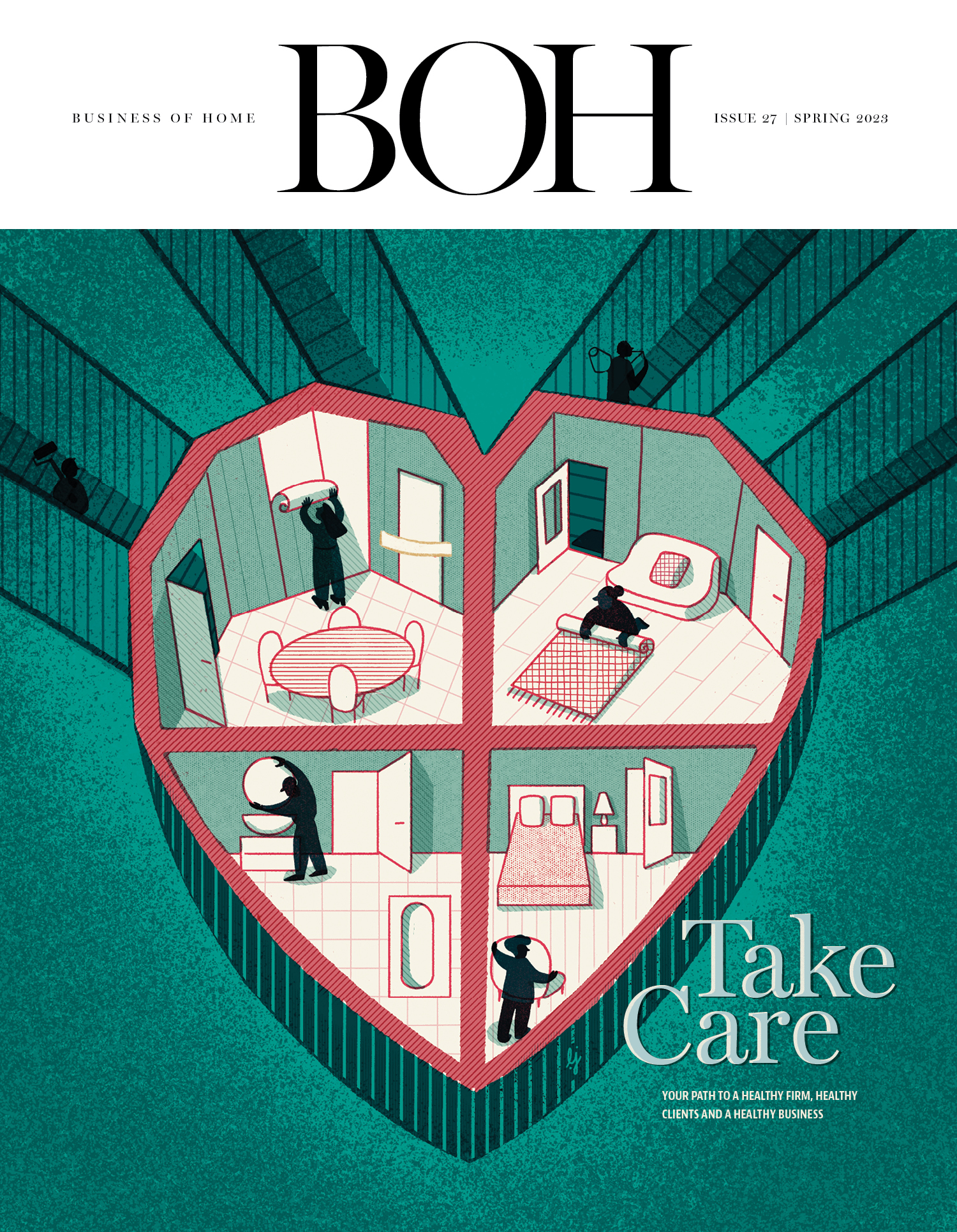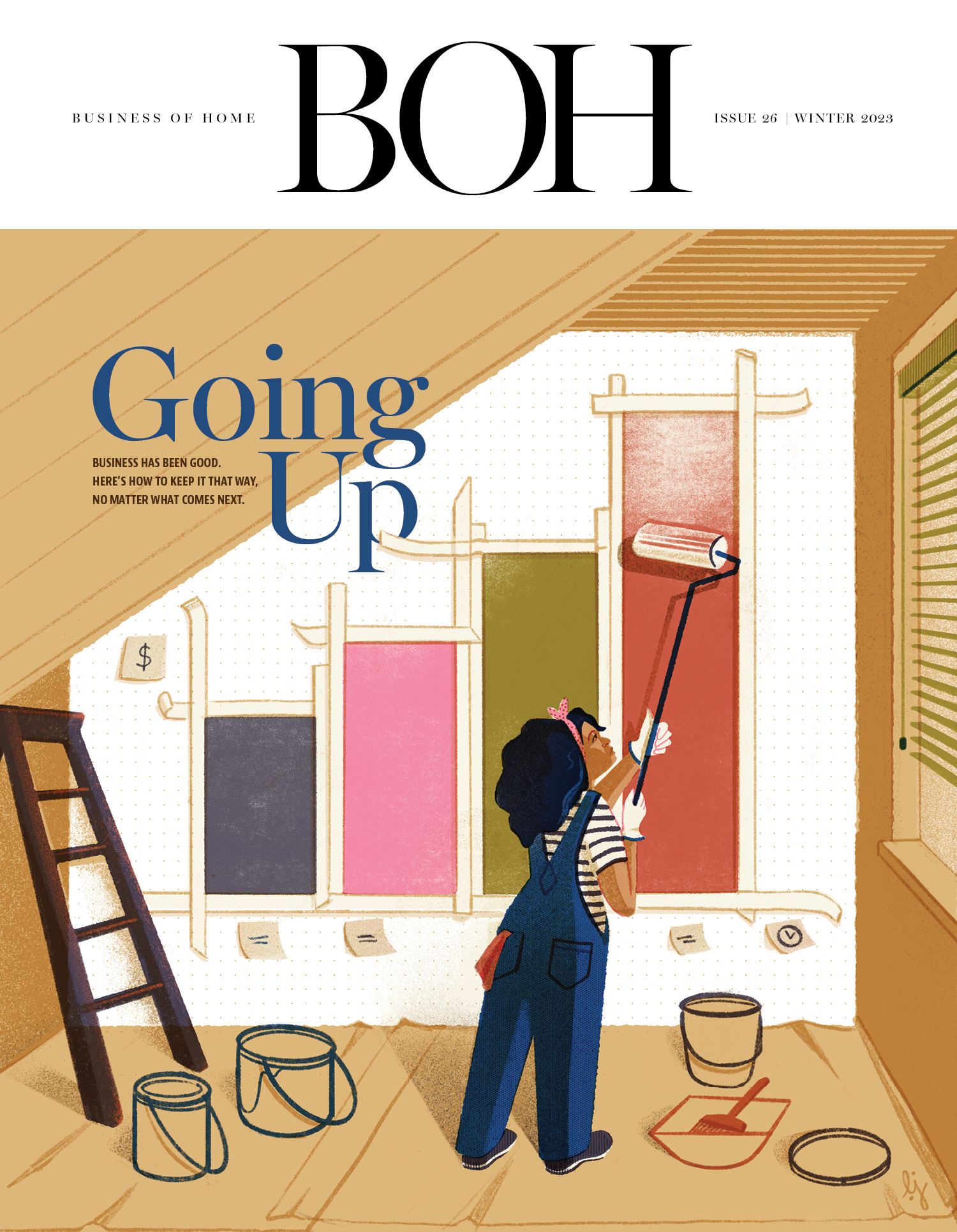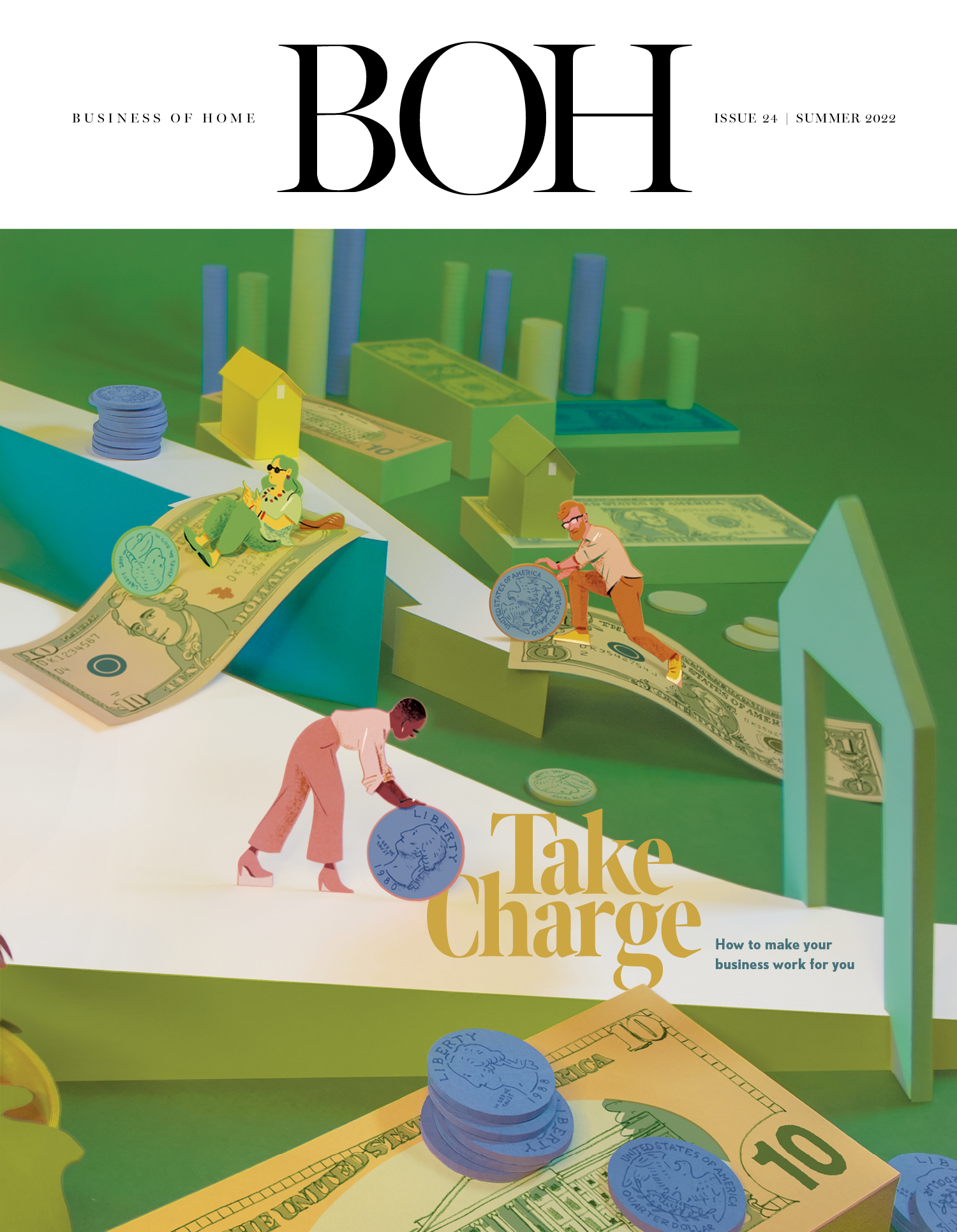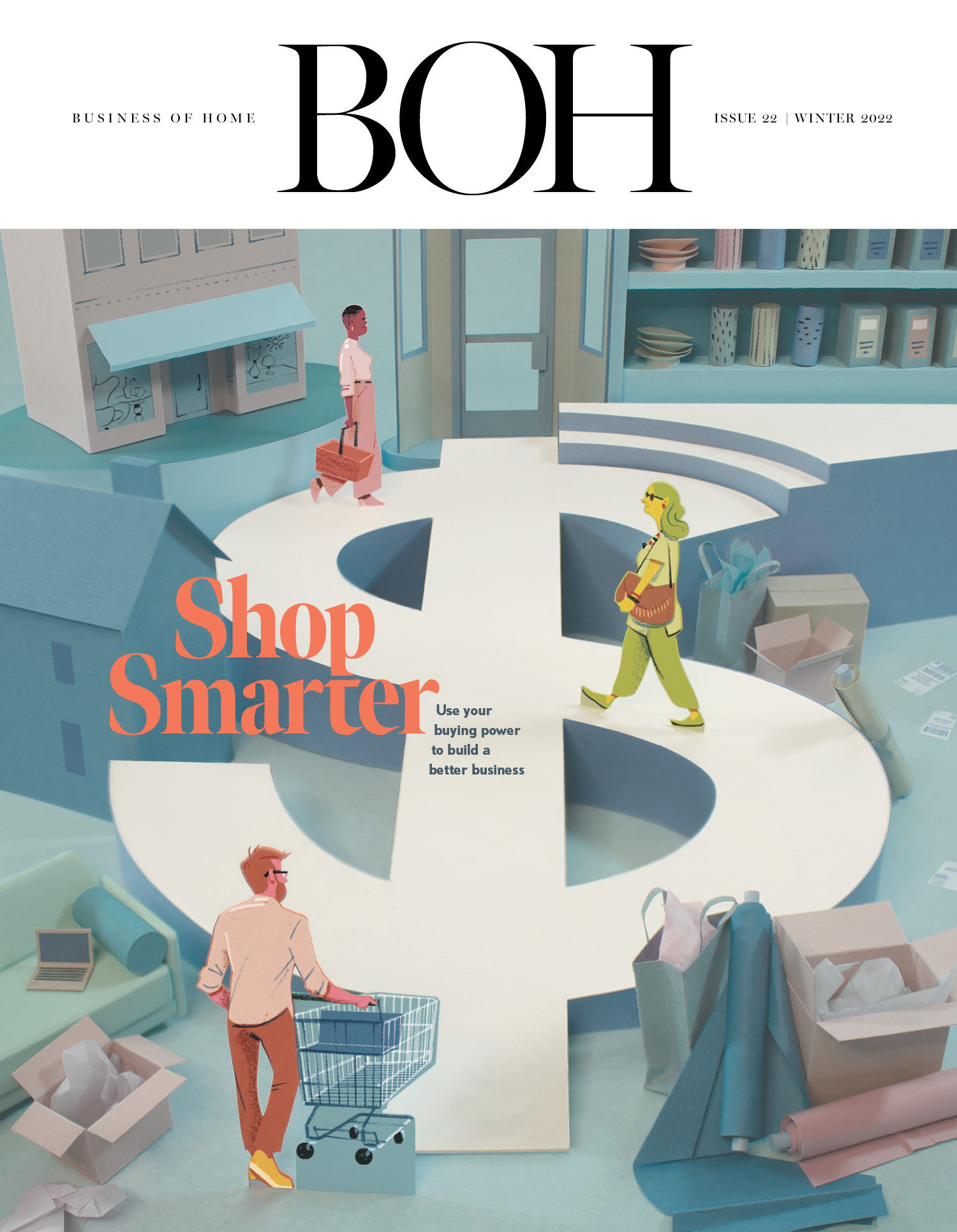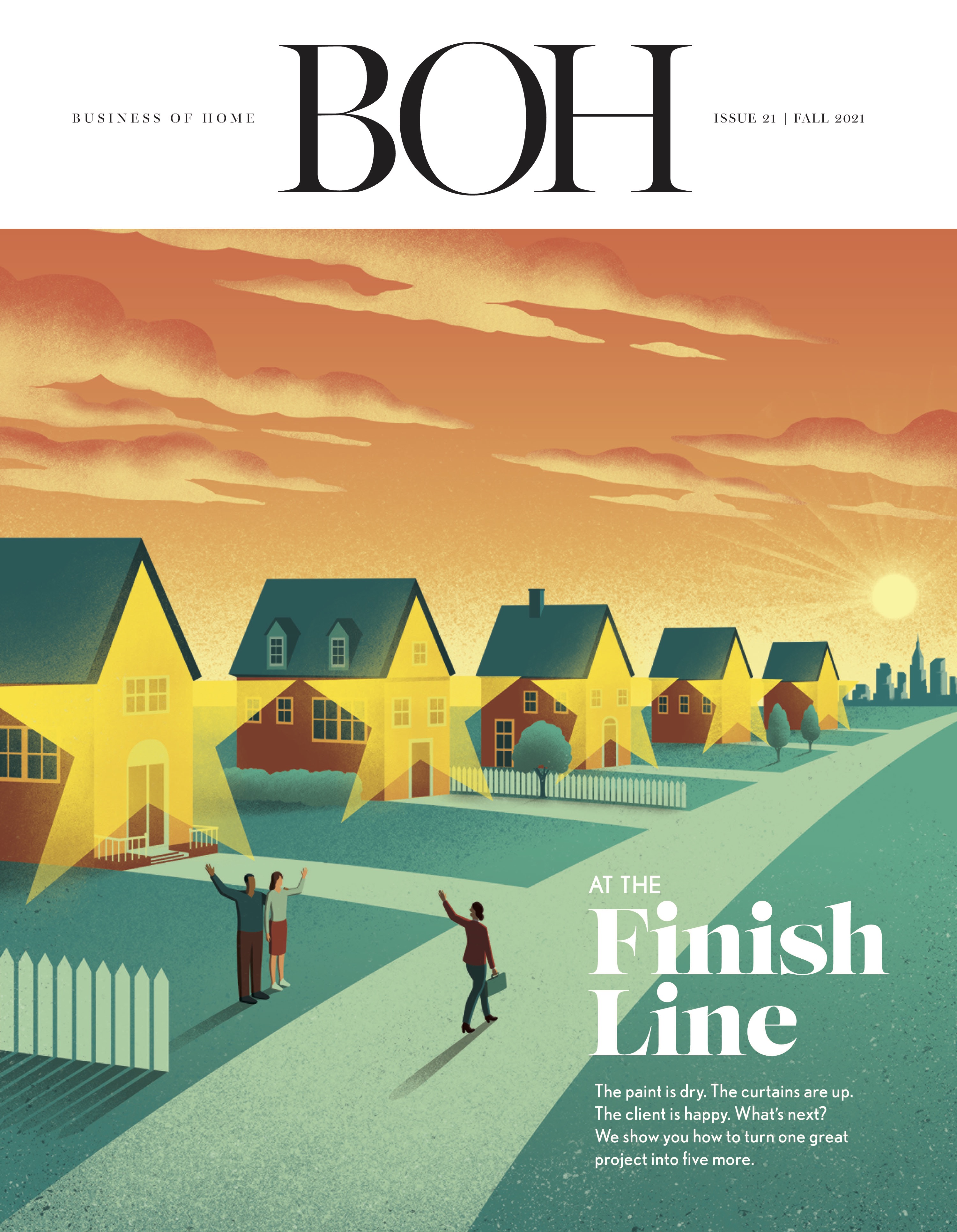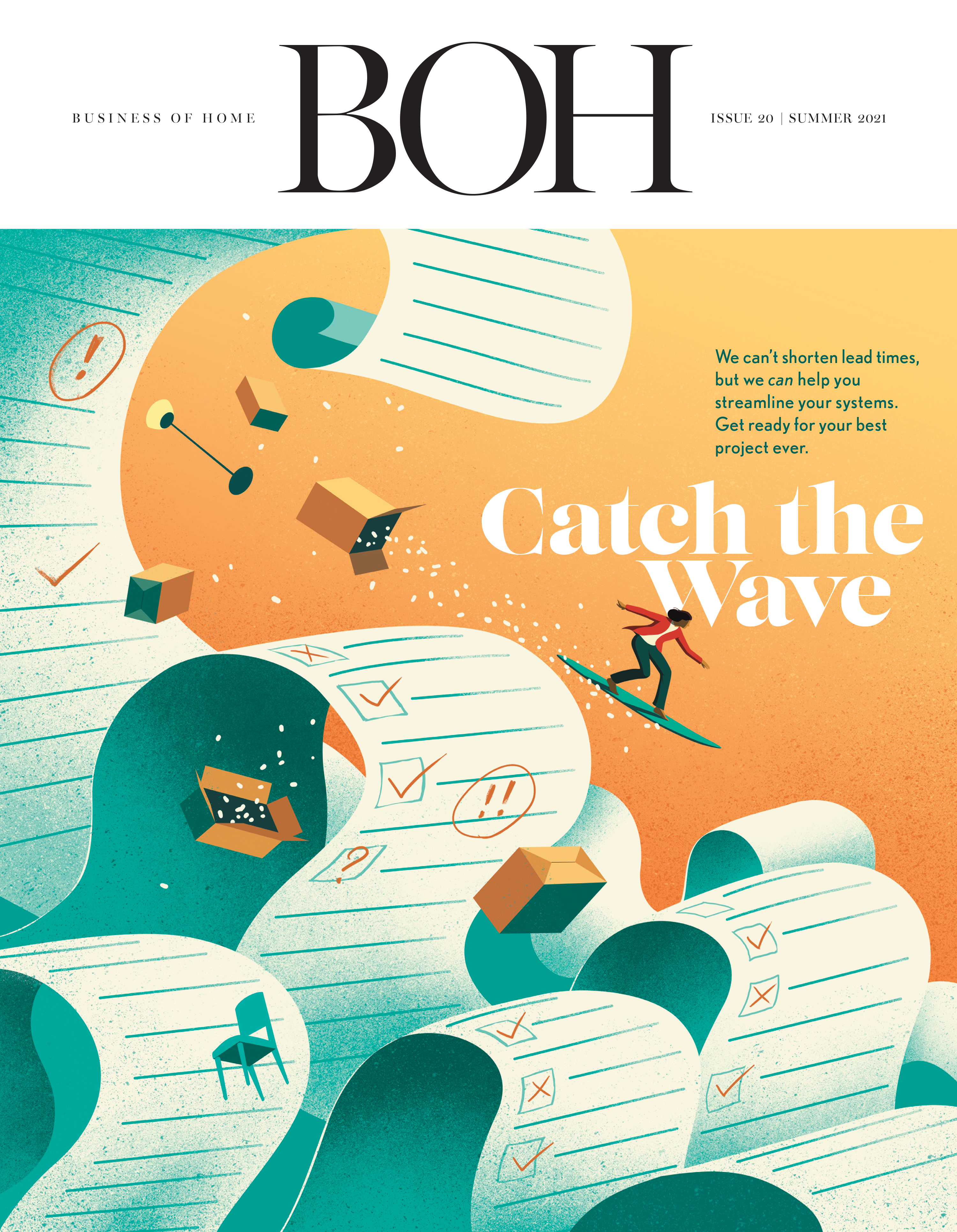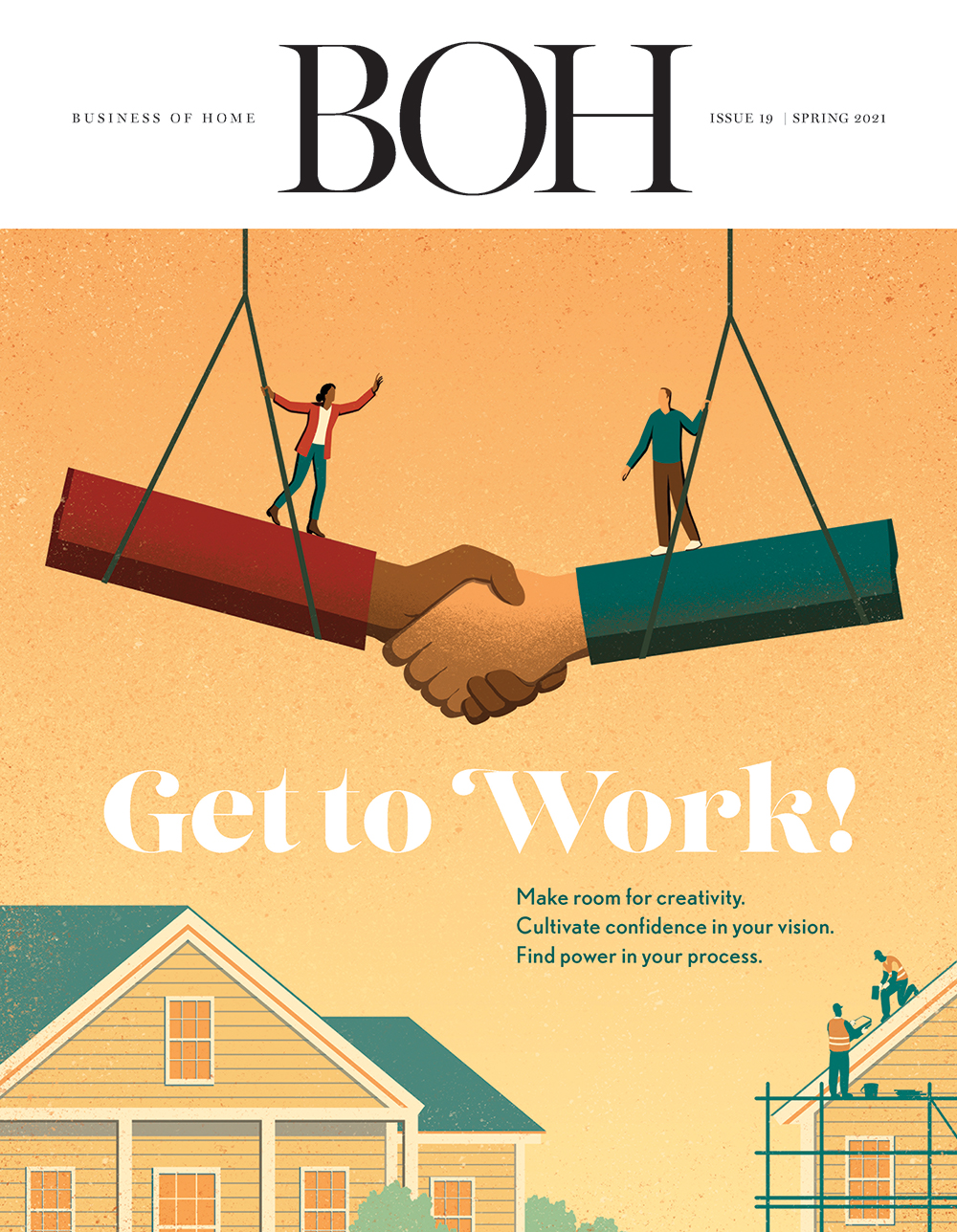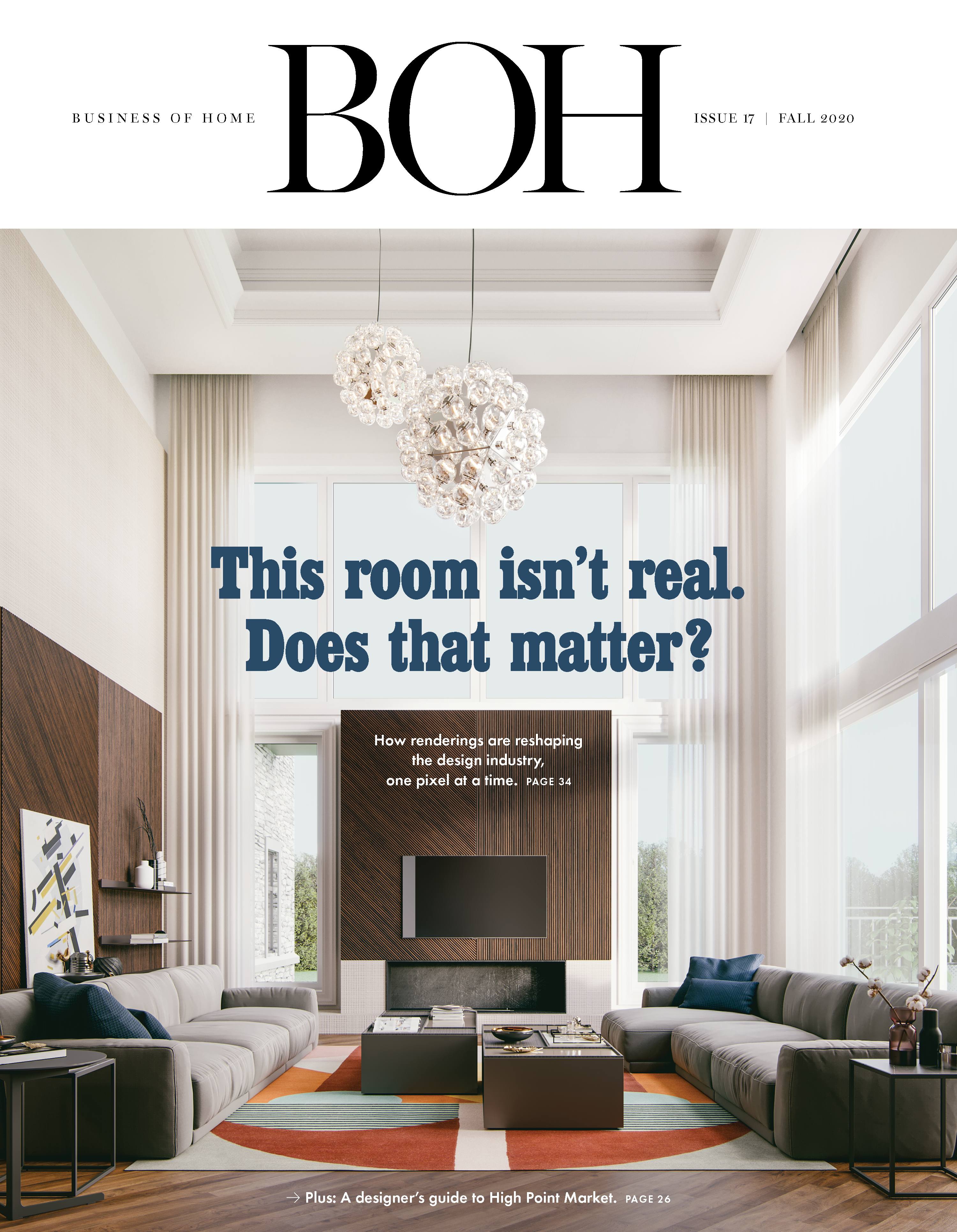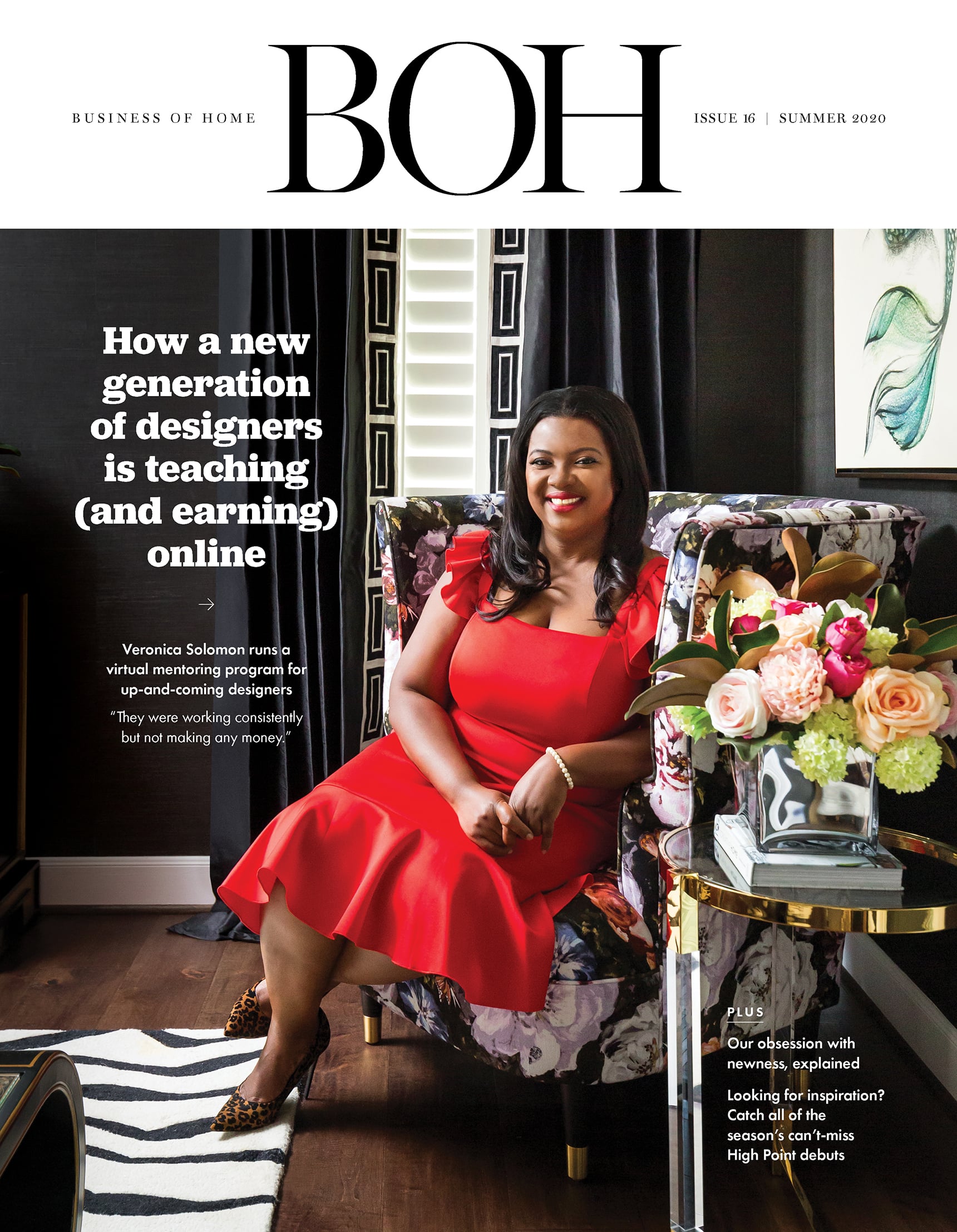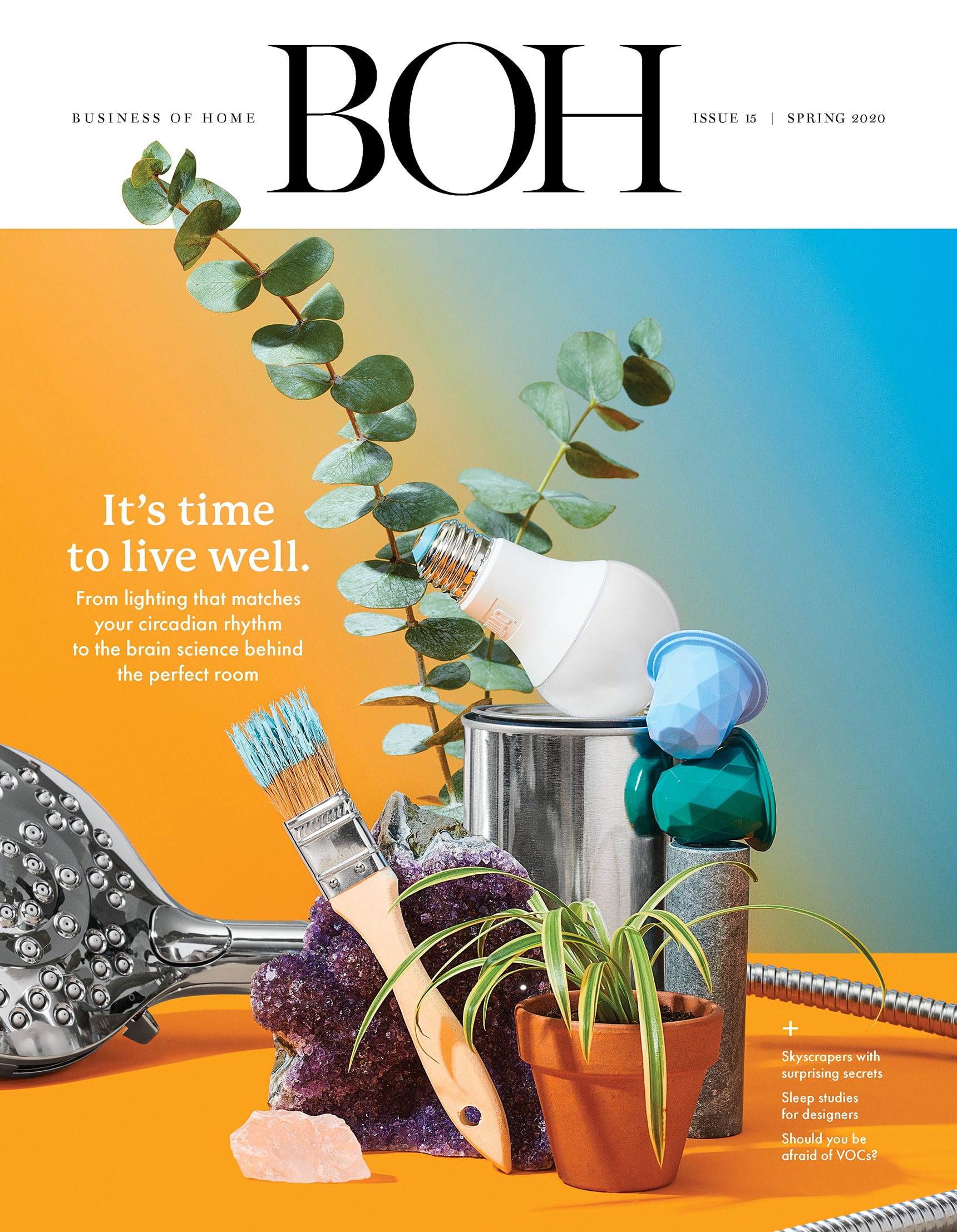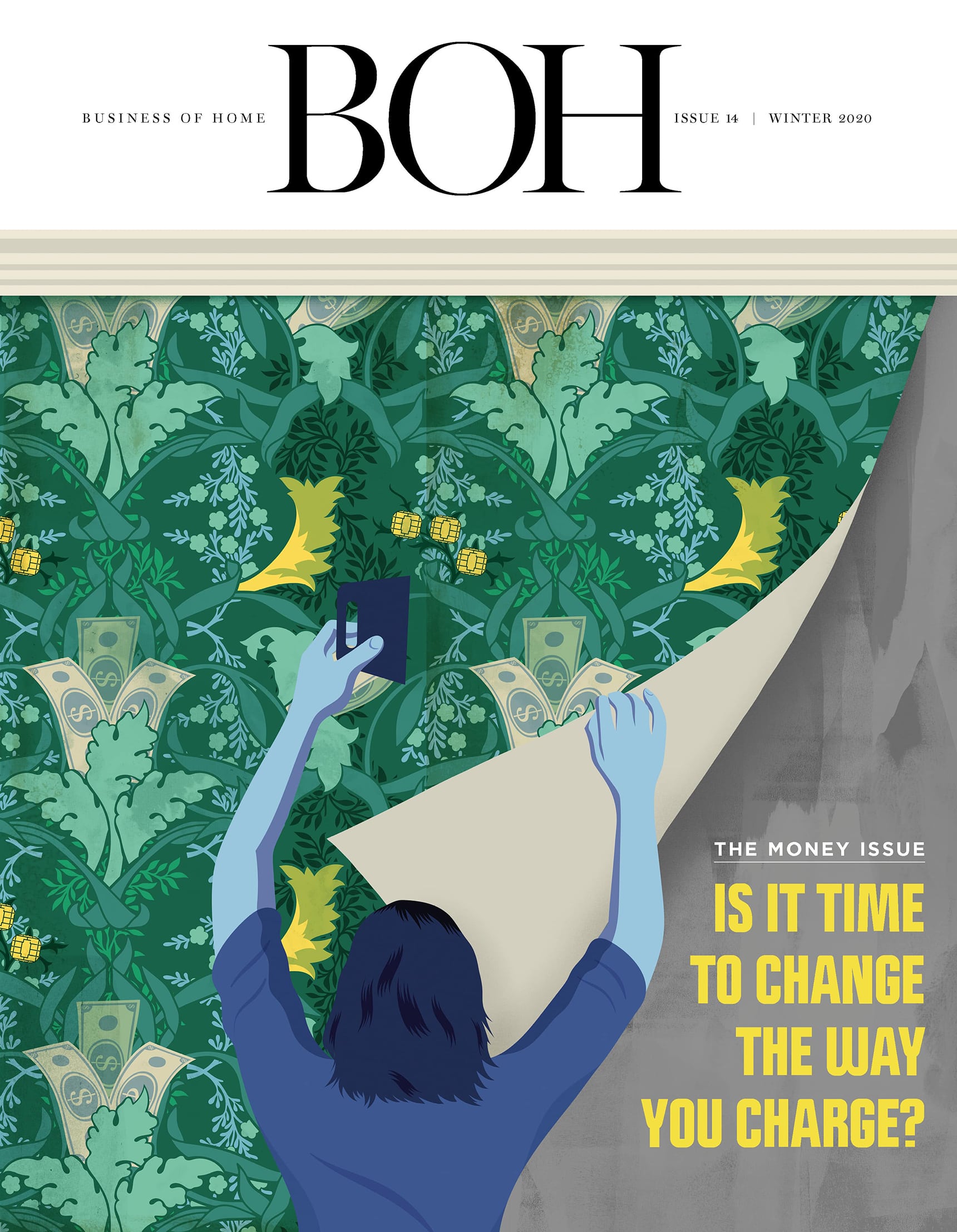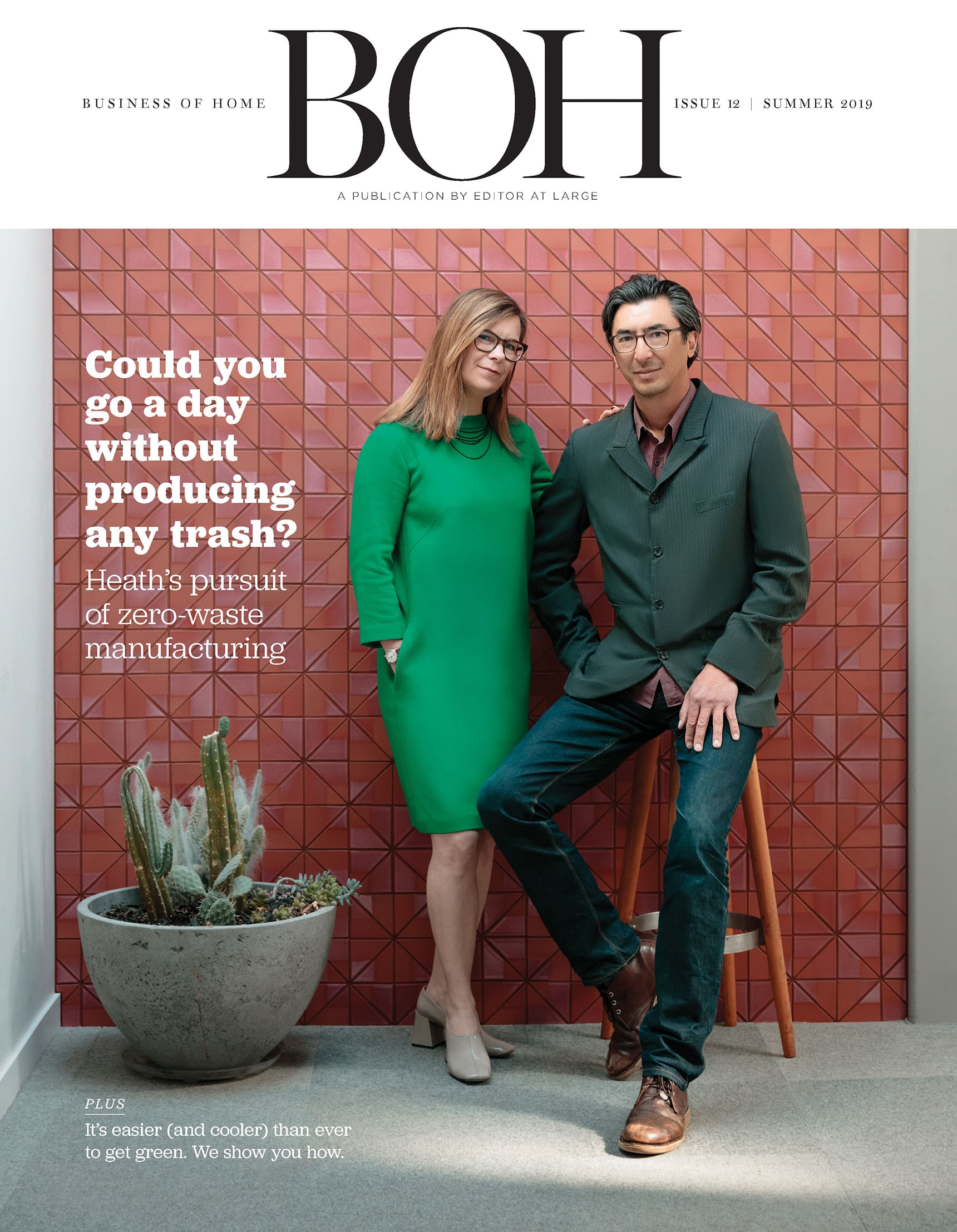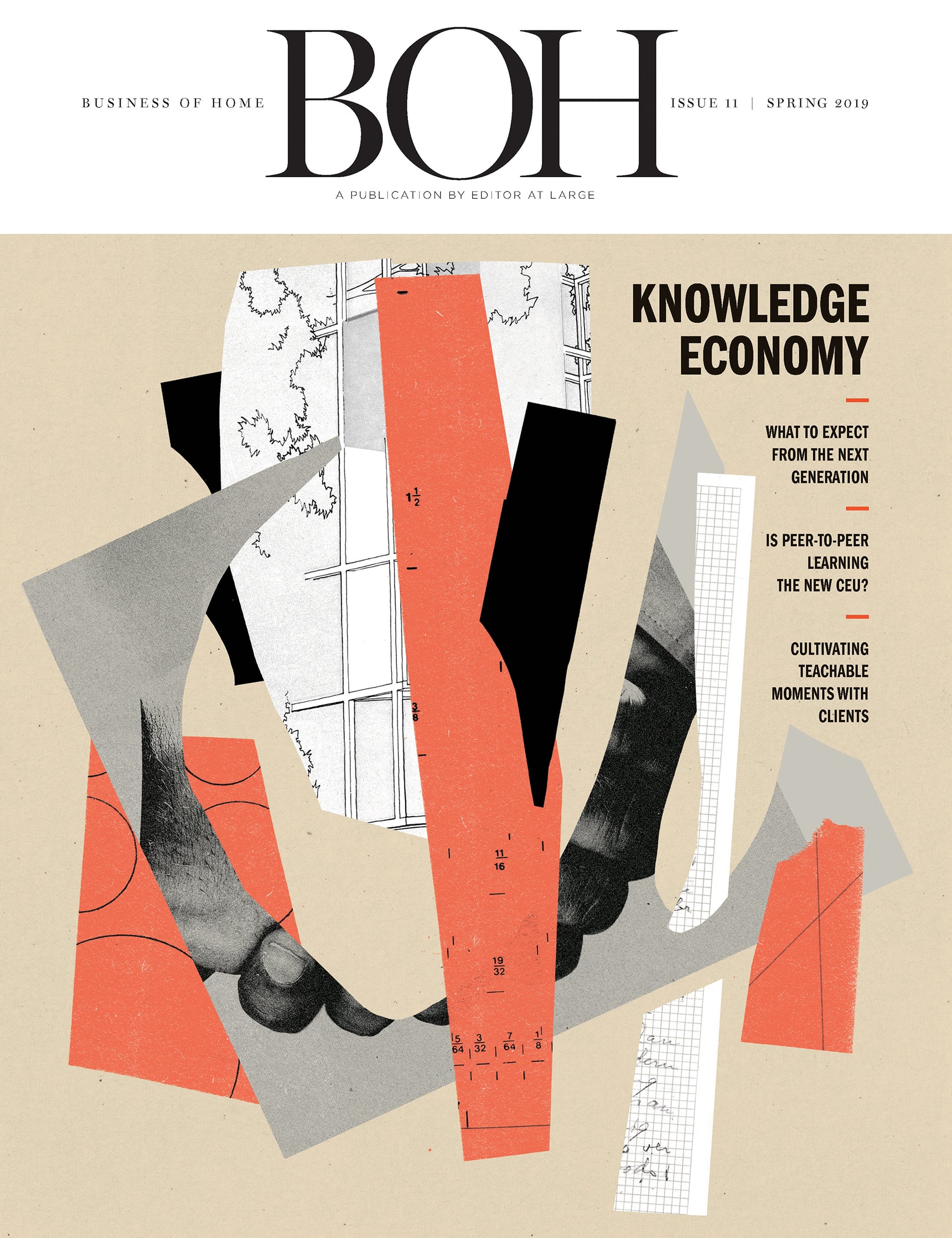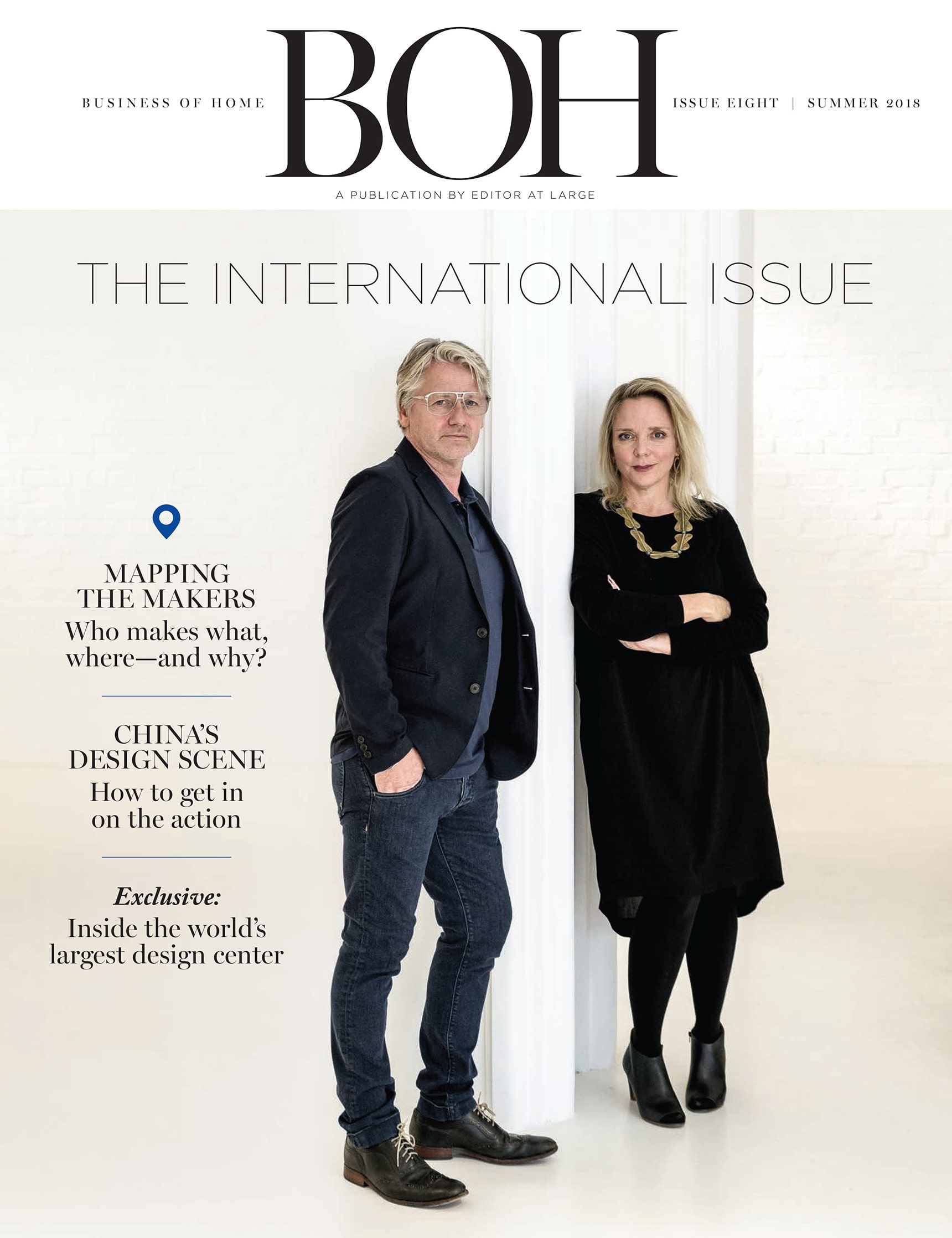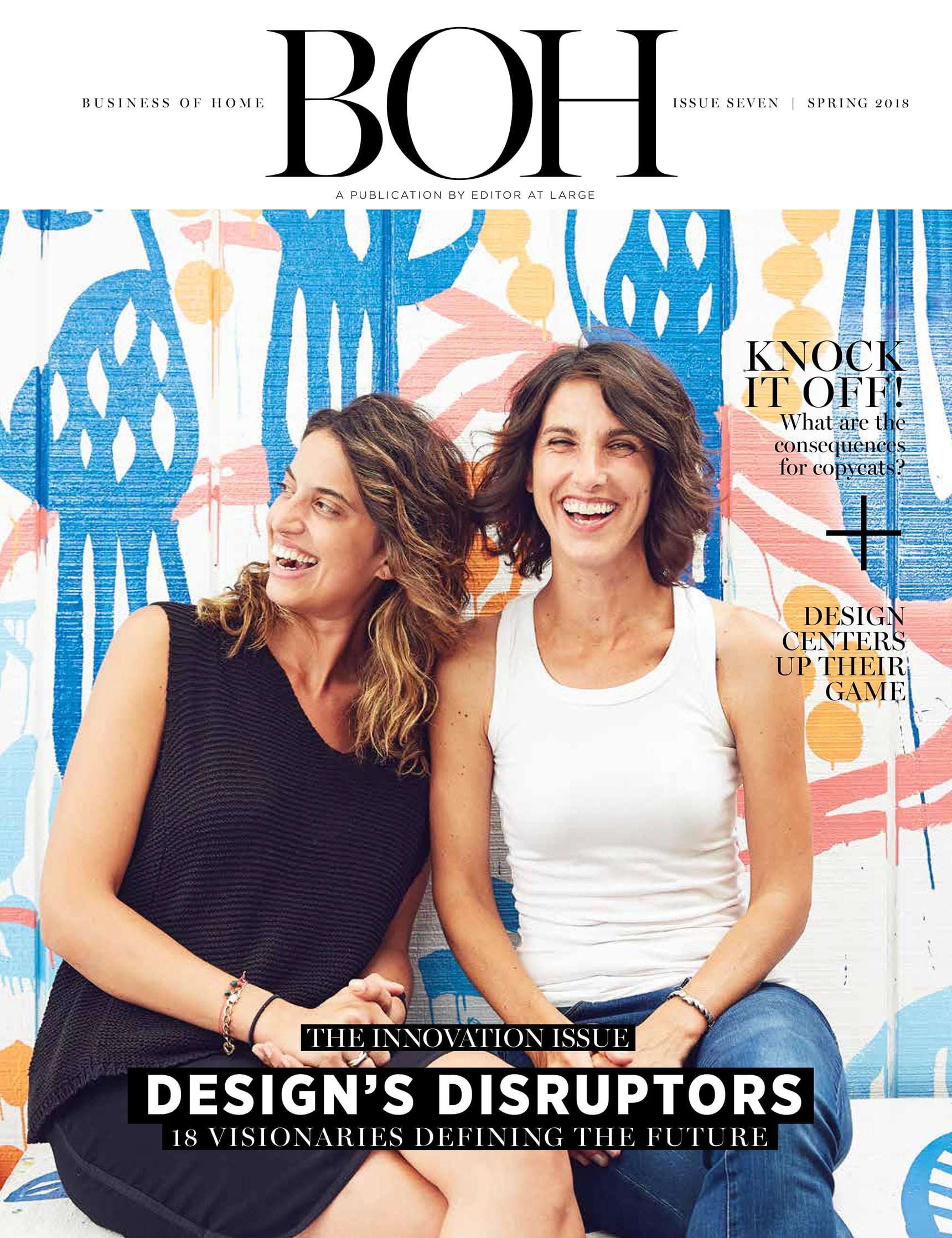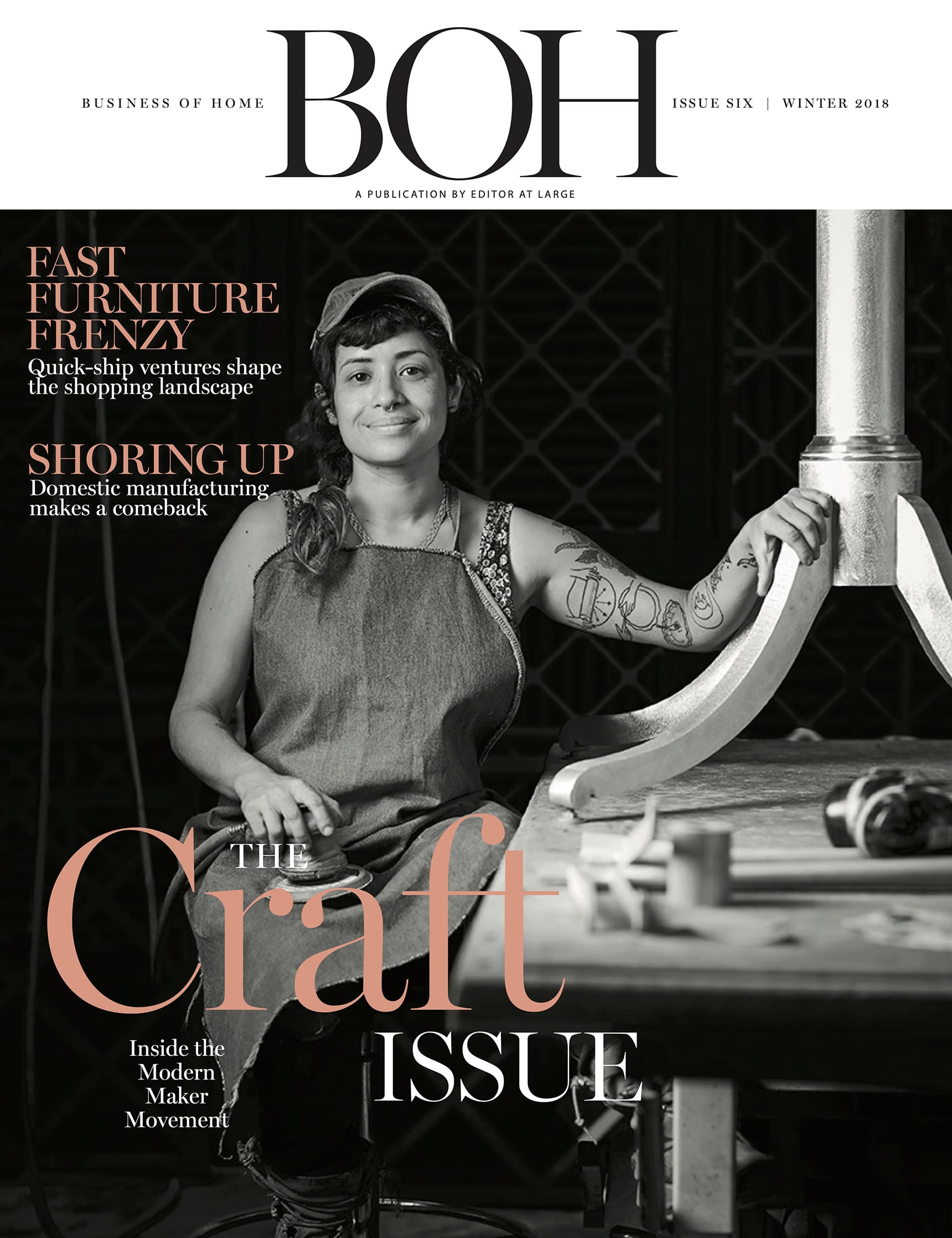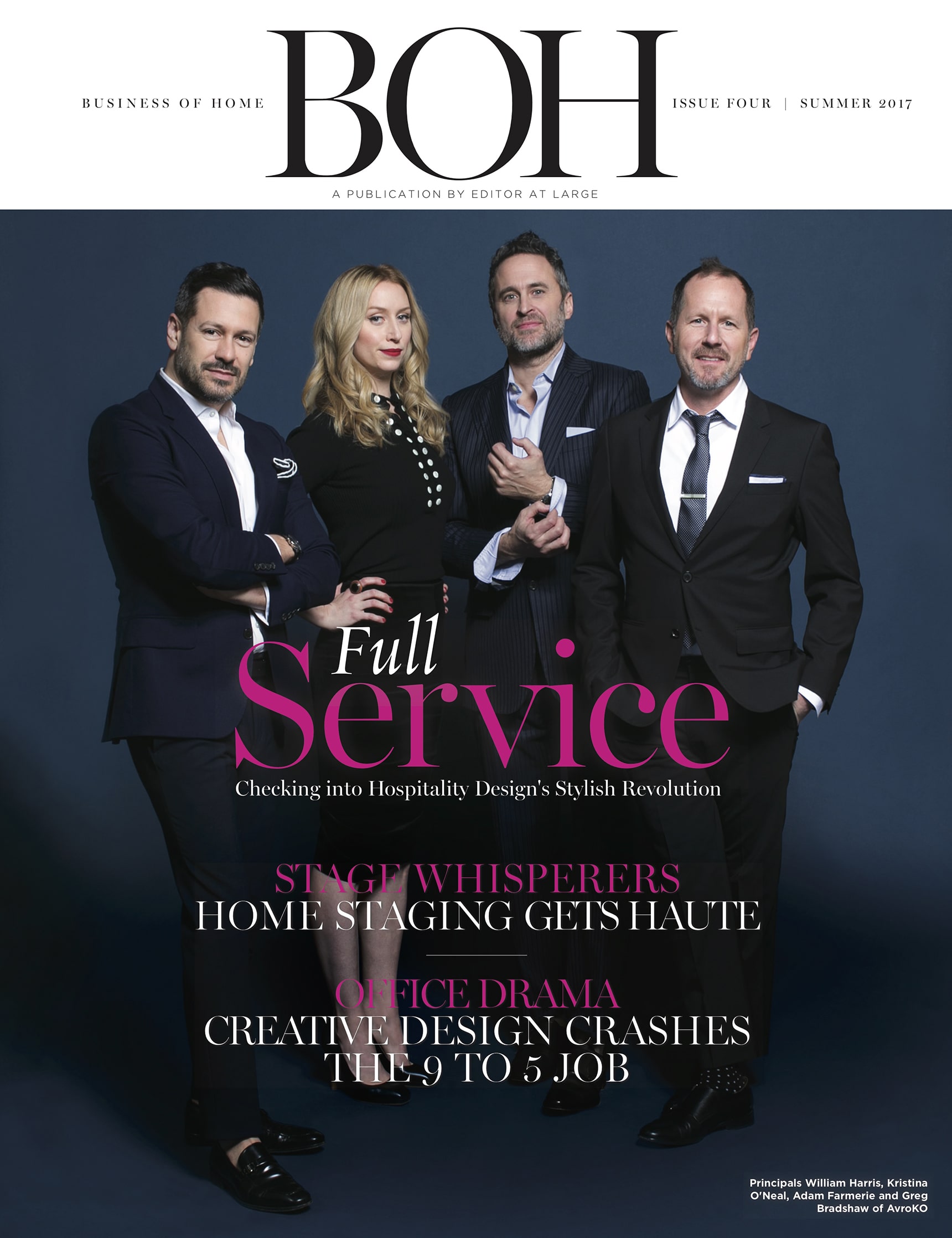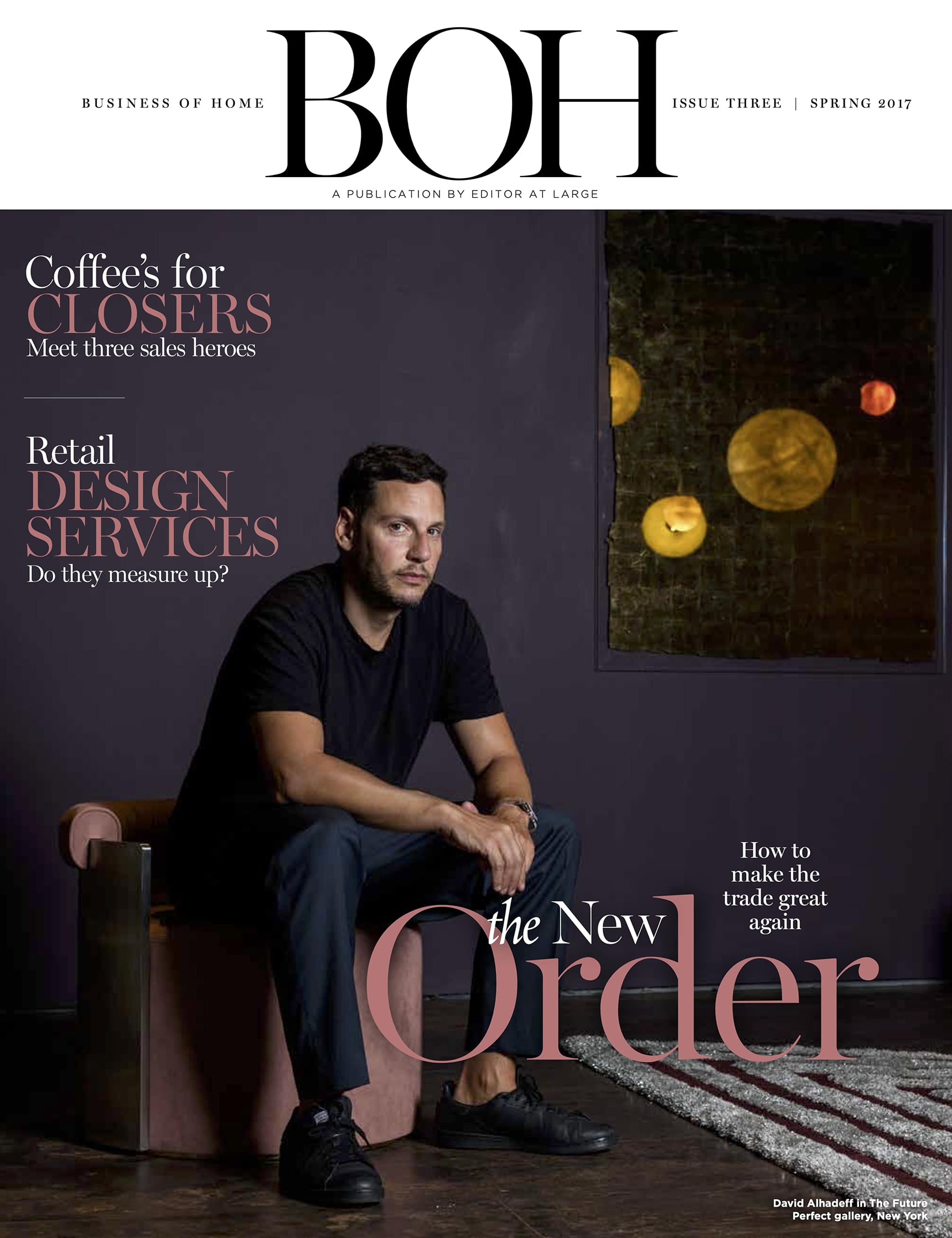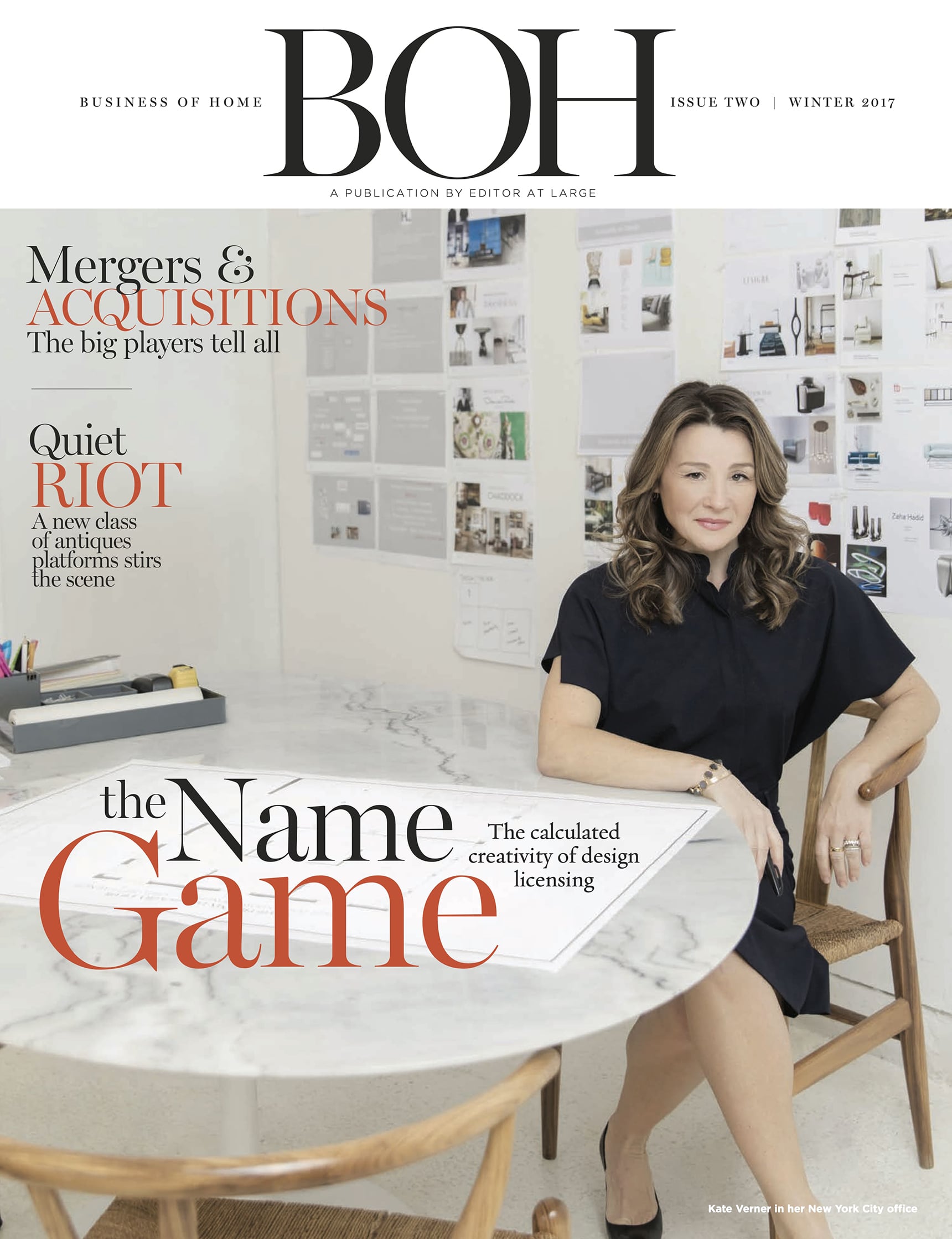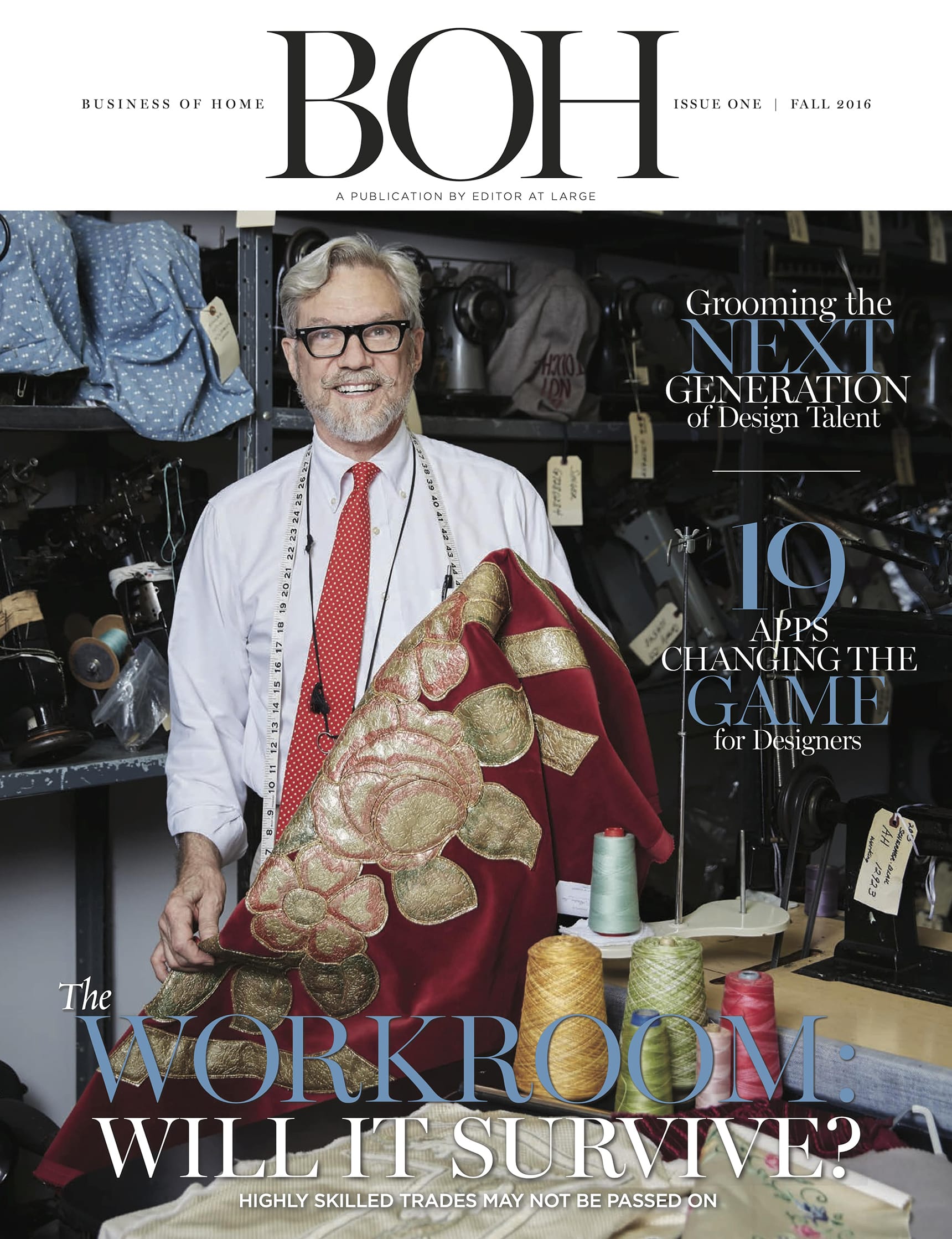The design decisions have been finalized, and it’s time to bring your vision to life—here’s how to ensure this phase is smooth sailing for you and your clients.
If signing a new client is like dating, the project management phase can be like a marriage. Once you’ve decided that you’re a good match and have built a solid foundation, you move on to rockier terrain, one littered with conversations about everything from a client’s feelings to their finances. “In the design phase, you’re just enamored with each other and happy to be working together, and then the budget proposal drops and it’s a reality check that shifts the relationship into a new gear,” says Meredith Heron, a designer based in Toronto. “Once the real work starts and we’re sitting together with a contractor talking about money, it changes your role.” How you navigate that change can make the difference between a one-time gig and a long-term working relationship.
In order to nail the execution phase, designers must fine-tune their internal processes while also managing their client’s idiosyncrasies. And developing trust and goodwill early on can help you to handle a crisis down the line. Heron once had a client melt down when a contractor informed her that he couldn’t finish her recently demolished kitchen until after the holidays. “She ran out of the room crying,” the designer remembers. “I knew it was important to her that she host Christmas for her family every year, and the idea that she wouldn’t be able to was really upsetting.”
Heron was ultimately able to save the day and get the project finished in time, but the experience drove home how vital it is to sync up with your client during the high-stress project management stage. Having to write large checks while your home is a construction site isn’t the most zen scenario to be in, but a skilled designer can keep a steady hand on the wheel and hold their client’s anxieties at bay while also doing the hard work of creating a dream home.
Paint a realistic picture
The surest way to achieve this balancing act is to manage the client’s expectations from the start. While project management isn’t typically as fun for the client as the design phase (they’re paying invoices instead of being razzle-dazzled by beautiful finishes and fine furnishings), Washington, D.C.–based designer Catherine Ebert says that nothing deflates them faster than giving them an unrealistic completion date or a budget that you can’t deliver on. “Sometimes that puts us in the bad position, at the beginning of a job, of having to break the news that a project is going to take longer or cost more than the client would hope. Being realistic goes a long way toward building trust,” she says.
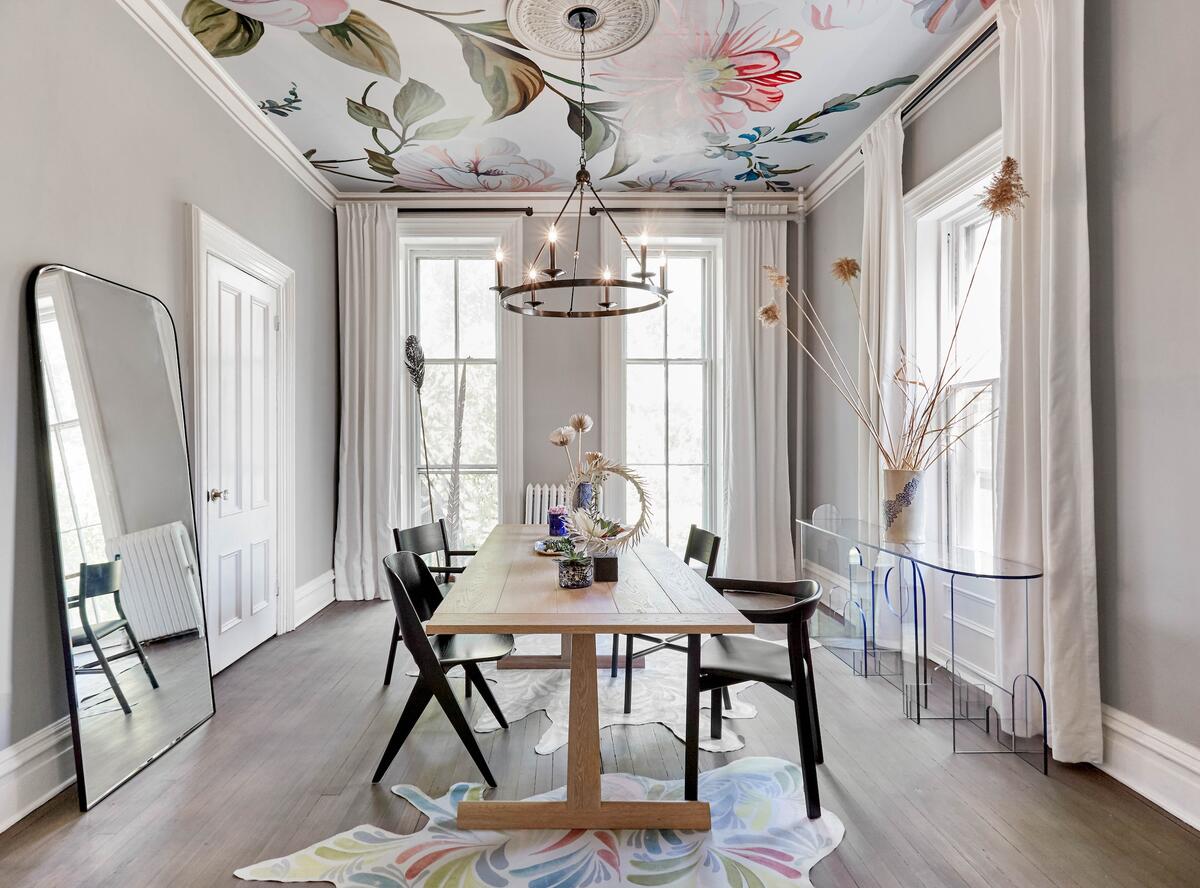
When setting expectations, it’s vital to remember that you’re the expert. While your client may want their dream kitchen to be ready in three months, there’s a lot to be said for teaching them about the time it takes to achieve an incredible result. At first, it might feel like you’re letting them down, but scrambling to pull off a project on an unrealistic budget or timeline ultimately isn’t going to benefit either of you—or the project—and can make you look like a rookie.
“Early in my career, I definitely fell into the trap of wanting to be someone who could pull a rabbit out of a hat in order to meet the client’s wishes,” says Ebert. “Now, 15 years later, I know that there’s discipline in not rushing to say, ‘Yes, we can make that happen.’ I would rather be honest upfront and get the client to settle in for a long haul to get a magical result than run into situations where we’re disappointing people.”
Years of experience have taught Heron that budgets nearly always change. With that in mind, she tacks on a contingency line item to all of her client estimates for 20 percent of their total budget. “I always tell them, ‘You’re going to spend it,’” she says. “It might be spent on an unforeseen cost during construction, or they might decide to splurge on the more expensive chandelier that they can’t stop thinking about, but it always gets spent.”
Pass it on
As designers grow their businesses, project management is often one of the first duties that gets handed off to employees. While delegation is a smart way to grow, it should also be handled with care—especially if the designer has been a client’s sole point of contact up until procurement. Making that transfer seamless is the difference between a client feeling surrounded by experts or deserted by their hand-selected designer.
Some designers prefer to pass their clients along to project managers or ordering specialists once the design concept has been approved. That way, clients get face time with the lead designer during the key creative stages and then a more efficient, high-touch experience from other team members throughout procurement and production. “Clients will often call me [with their questions, only to] hear me say, ‘Let’s bring in the project manager—they know the details here,’” says Hadley Wiggins, a designer based in Manhattan and Long Island’s North Fork. “Having people who are in the trenches is hugely beneficial because they are in constant communication with the clients and it’s a resource they can draw on when they have questions.” (There’s a financial upside for the client, as well: Wiggins charges a lower hourly rate for her project managers than her fee as the firm’s principal.)
Nashville-based designer Jason Arnold makes his two staff design assistants a regular point of contact from the beginning of the relationship so the clients don’t feel surprised or shortchanged when he steps back during the later stages of the process. Hiring trusted team members and including them in client correspondence from day one made delegating—a challenge for erstwhile solopreneurs like Arnold—smoother and more effective, both for him and his clients. Now, he sees his team members’ involvement as an essential part of the experience his firm offers: “They’re the clients’ go-to when they need a question answered,” he explains. “If I’m not available, they know there are two other people who know their project backward and forward that can help them. It’s another layer of service.”
While Heron brings additional team members into the project management phase, she’s always copied on the client email or included in a group text. She often vets the language before a message is sent if it’s a sensitive issue or bad news. Part of the reason she prefers to stay in the loop is because she feels like she is so in tune with her clients. “[For some], it would give them anxiety to be aware of every tracking number, while other people, it’s going to give them anxiety not to know that the sofa is delayed,” she says. “When you know that sort of thing, you can develop a communication plan that factors personalities in.”
One realm where Heron is never the client’s direct contact is billing. “I like to keep a person between me and the numbers,” she says. “It makes it a little less personal, like I’m not the one asking for the money, and I find it helps maintain the friendliness I’ve already worked to develop.”
Embrace the status update
Consistent communication is key during the procurement phase, especially for designers who don’t have a team. Rhinebeck, New York–based Ana Claudia Schultz, whose only employee is a chief operating officer, says that being honest about her progress has made all the difference in maintaining good client relationships. “I send regular reminders about my timelines or when I’m going to stop by to check on something,” she says. “Sometimes it can be hard to remember to stop and send that email or give them a call and update them, but I never want them to have to check their doorbell camera to know I’m swinging by or that something’s being delivered.”
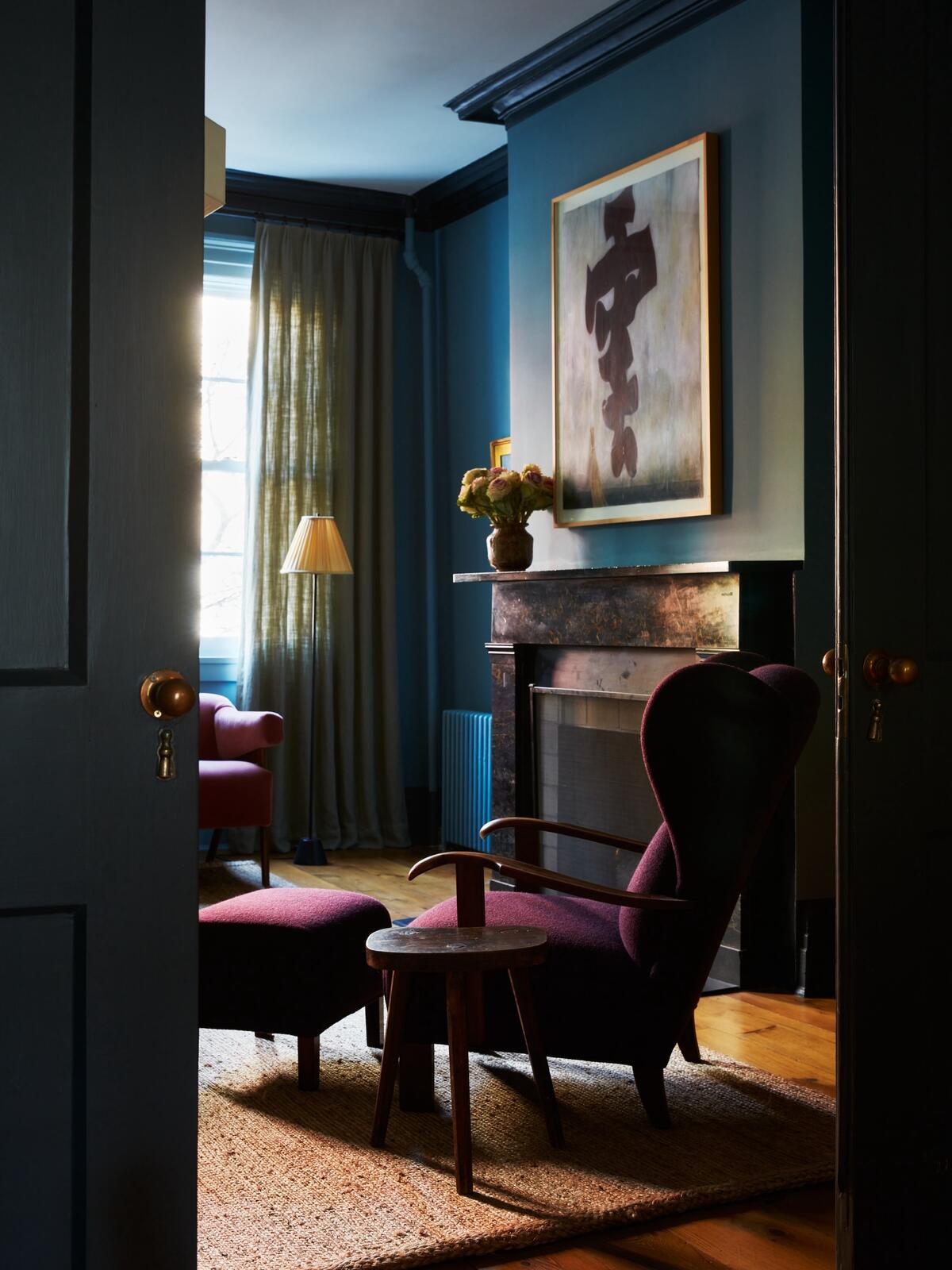
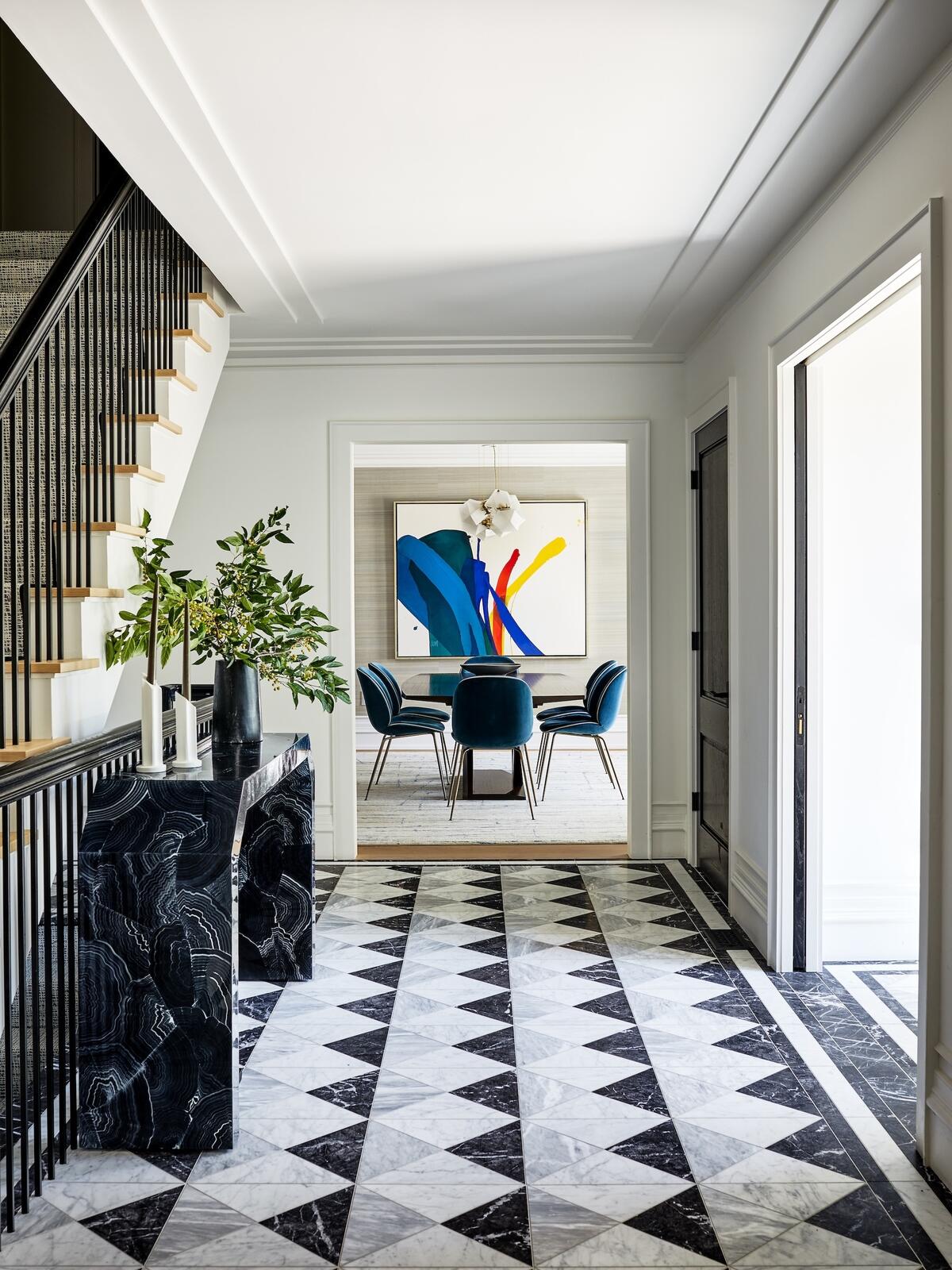
Recent industry events have been a reminder for Schultz that sometimes even the most organized designer will be caught off guard. “You can do everything the same way you’ve always done it, and then end up on bad terms with a client because Mitchell Gold + Bob Williams went out of business and you can’t get their chair,” she says. “You do have to accept that you only have control over so much, and transparency is the best you can offer people sometimes. If it’s something that’s out of our control, we make sure the relationship doesn’t get tarnished by working to resolve the issue in a timely manner and maintaining clear and open communication [rather than] trying to hide something.”
Wiggins’s team sends clients weekly emails with concise, relevant information about the project’s status, organized by action items that are for the client to tackle, those in the firm’s queue, and the ones reliant on a third party to complete. “Everyone’s time is valuable, and we want to make sure that if we’re asking our clients to read an email from us, what we’re putting in that email is meaningful,” says the designer. “We try to get down to ‘here’s exactly what we need from you’ quickly.”
If a week goes by and an action item is outstanding for her firm, the team points it out and explains why. “It’s helpful to be transparent and show that we do hold ourselves accountable. And if it’s the client who’s the holdup, we’re able to point back and say, ‘We did ask for this last week. What do you need from us to get that done?’”
Eyes on the prize
In addition to providing regular updates, Ebert likes to invite clients along to shop for finishing touches or, particularly on new builds, to come to the site on a day when something really beautiful is being installed. Giving the client opportunities to be part of a unique process helps keep their morale up during a lengthy project that can be both tedious and expensive. “Watching elaborate tiles being installed is an experience that most clients won’t have had before, and it can be really special to include them,” says the designer. “That said, it’s a delicate balance between keeping them entertained and excited about all the stuff that they’re getting, but also saying, ‘OK, these things need to go this way and in this order, and in this timeline.’ It’s easy to get blown off course if you let the client be overly involved.”
Arnold, too, will pepper in the occasional showroom field trip or bring the client along to select a special item like a marble slab, but he cautions against overwhelming them with too many chances to weigh in. “They can be a part of the process, but they don’t need to touch everything—that’s why they hired a designer,” he says.
Wiggins points out a simpler way to get clients excited: Don’t underestimate the contagious power of your own enthusiasm. “This work is based on people investing a lot of money and time, and I don’t take that lightly,” she says. “Whether it’s one of many properties they own or their forever home, there is a lot of emotion tied up in
it. If you can stay connected to the joyful part of the work, your clients will feel that, and you won’t be faced with having to keep their energy up. A good, positive vibe goes a long way.”




